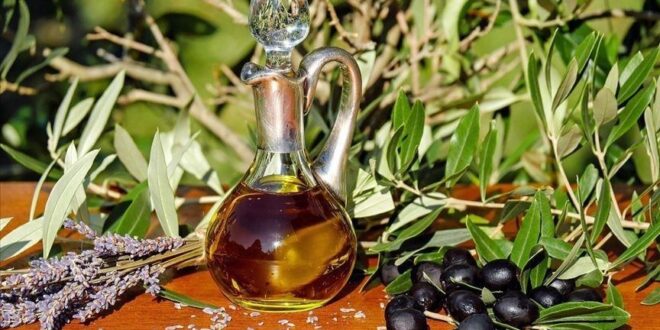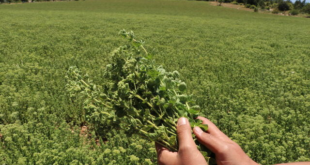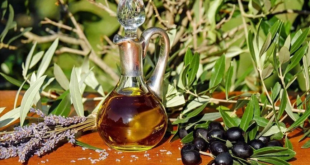Cultural landscape is a complex term, defining the joint creation of nature and human intervention. It is defined by UNESCO as: “Combined works of nature and humankind, they express a long and intimate relationship between peoples and their natural environment.” This definition perfectly fits to

the olive groves of Türkiye, not only in the Aegean region but also along the Mediterranean coast, Southeast Anatolia, and mild temperate climates of the Black Sea region, such as Artvin, towards Georgia. Olive-growing regions of Anatolia have cuisines totally shaped around olive oil and olives, especially salt-cured black olives are part of daily fare on the tables, especially being an indispensable part of Turkish breakfast. Our olive culture is now on the UNESCO Intangible Cultural Heritage List as a cultural heritage element in danger that is in need of urgent safeguarding. The national nomination file is titled “Traditional Knowledge, Methods and Practices Concerning Olive Cultivation in Türkiye” covering all the olive growing regions of the country. The national application files were prepared by the Culture and Tourism Ministry, and the nomination was accepted and declared on Dec. 5, 2023.

This does not necessarily mean that the olive groves are registered as sites under protection, as to register a site as a cultural landscape element requires another procedure, but now, at this point, the olive growing culture is under safeguarding that will entail projects put into action in the near future. When we look at the files of the Ministry, the term olive culture is defined as: “Traditional Olive Cultivation” refers to the traditional knowledge, methods and practices that have been passed down for centuries on grafting, pruning and fertilizing the ‘delice’ [wild olive tree] or local cultivars; picking and harvesting olives; processing table olives through methods such as preserving and curing; and pressing olive oil.” Apart from cultivated olive groves, the “Delice” olive landscapes are also vast, and these wildly grown trees can easily be grafted. The word “Deli” means mad, lunatic or crazy, but in terms of plants, “delice” refers to untamed wildly growing varieties. Such a natural treasure is an asset we truly have to safeguard and protect from threats such as urbanization and environmental pollution.

Selim Terzi, the new general director of the Research and Education Department responsible for Intangible Cultural Heritage, states: “Above all, our traditional olive cultivation has become a common heritage of humanity. Moreover, we have emphasized that it requires urgent protection and made a commitment to take olive culture under protection. In this respect, a very important step has been taken for its protection and preservation. Furthermore, awareness of this cultural value will be increased in the international community. On the other hand, with the inscription of traditional olive cultivation on the List, the visibility and value of Turkish olive cultivation at national and international levels will be increased. Our companies producing industrial or boutique olive products are naturally expected to benefit from this situation and we expect to contribute to our exports in terms of reputation, hoping that Turkish olive oil and olive products will receive the prestigious recognition they deserve.”

Cultural landscape also refers to intangible cultural elements such as the accumulated knowledge of agriculture, and also all the rituals and festivals related to harvesting. There are socio-cultural practices, the use of the folk calendar, the transmission of knowledge, skills and methods from generation to generation. These are exactly what intangible cultural heritage defines. For example, in order to graft “delice” and grow new olive saplings according to climate and soil characteristics, it is necessary to know the local olive tree varieties. This knowledge is traditionally passed down from generation to generation. There are also customs, traditions, social practices and festivals related to the beginning or end of harvest time. Olives are harvested by a collective method called “imece” or “örfene” where villagers come together. This heritage also plays an important role in maintaining social and cultural identity, especially for rural olive growers, as they continue to produce olives and olive oil using traditional methods that have not changed significantly for centuries. Therefore, the listing of this heritage strengthens the sense of cultural continuity for olive growers and they perceive the element as an integral part of their cultural identity.

In that respect, Selim Terzi explains their future prospects as: “With the inscription of traditional olive cultivation on the UNESCO Lists, a commitment has been made to preserve this tradition. First of all, as the Ministry, we will take steps towards this. In this framework, we will carry out our work by involving our stakeholders as well as our Ministry in the process. Conservation action plans constitute the basis of protection efforts. As the Ministry, we plan to organize a conservation action plan workshop on traditional olive cultivation and invite representatives of relevant communities, individuals, non-governmental organizations, institutes, universities and the private sector. At the same time, we are working on what we can do to promote our traditional olive cultivation tradition internationally. We will continue to keep all our cultural values alive, represent them successfully in the international arena with a living heritage approach that focuses on people as the focal point, and carry out activities that embrace and bring everyone together in our country with the unifying power of our culture.”

This clear commitment gives hope for the future, at one of the backbones of our culinary heritage is olive oil braised dishes, known with the generic name “zeytinyağlı” meaning literally “with olive oil”, naturally olive oil being the essential ingredient in this large category of dishes, referring to a vegetable or legume dish cooked with olive oil and eaten cold or at room temperature. The method is simple, a usual dish starts with sautéing onions, sometimes also garlic, and vegetables are added, sometimes with tomatoes and a handful of rice to soak up the cooking juices, and the whole dish is braised slowly to reduce the cooking juices until it becomes like a sauce. These dishes were favored particularly by the Christian communities of the Ottoman Empire during the long Lenten fasts. Their cooling effect makes these dishes very popular during hot summer months. The Olive oil braised category of Turkish cuisine is such a strong vein in our culinary culture that it has to be taken more seriously, it is time to talk about the oil and vegetable parings, such as which olive varietal to use with which vegetable, or dish, and so on. It seems that we will be talking a lot about olives this year!

By Aylin Öney Tan,
Source: www.hurriyetdailynews.com
 THE GLOBAL WINDOW OF TURKISH FOOD AND AGRICULTURE The Global Window of Turkish Food and Agriculture Sector
THE GLOBAL WINDOW OF TURKISH FOOD AND AGRICULTURE The Global Window of Turkish Food and Agriculture Sector









